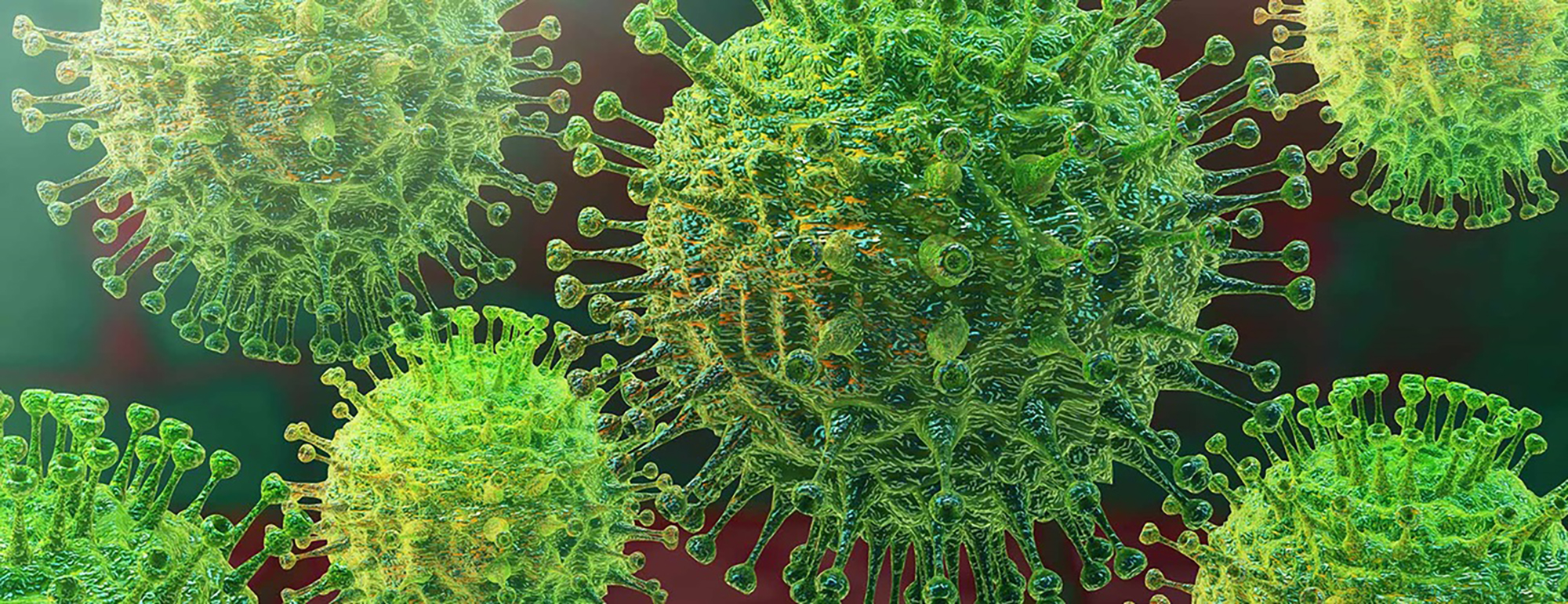Promise of Remdesivir Focuses Anew on Baric Lab
Posted on April 30, 2020
Six years ago, the Ralph Baric lab in UNC’s Gillings School of Global Public Health partnered with the biopharmaceutical company Gilead Sciences Inc. to test the company’s antiviral drugs to curb emerging viral diseases often overlooked by big pharmaceutical companies.
As national attention to the promising antiviral drug remdesivir grows this week, the Ralph Baric lab in UNC’s Gillings School of Global Public Health is in the spotlight again.
“The data shows that remdesivir has a clear-cut, significant, positive effect in diminishing the time to recovery,” Dr. Anthony S. Fauci, White House medical adviser on the coronavirus, said Wednesday as U.S. deaths from COVID-19 passed the 60,000 mark. “That is really quite important.”
The Fauci-led National Institute of Allergy and Infectious Diseases is in charge of a study of more than 1,000 patients around the world that has shown that, on average, patients treated with remdesivir were ready to be discharged from the hospital within 11 days — four days earlier than patients who had received a placebo.
While cautioning against possible serious side effects, Fauci said, “What it has proven is that a drug can block this virus.”
Baric is the epidemiologist who has been studying coronaviruses for 37 years. His lab was one of the first to receive the COVID-19 virus, in February, for its work toward developing a vaccine.
Six years ago, the lab partnered with the biopharmaceutical company Gilead Sciences Inc. to test the company’s antiviral drugs to curb emerging viral diseases often overlooked by big pharmaceutical companies, explained Tim Sheahan ’08 (PhD), a virologist in the Baric lab.
Coronaviruses were of particular interest. Fast forward to today, and the intravenous drug remdesivir could potentially be a relief to this global pandemic. Just like broad-spectrum antibiotics — which can cure a wide range of bacterial infections — a broad-spectrum antiviral like remdesivir can work against genetically distinct viruses.
In animal and cell models of SARS and MERS coronavirus diseases, researchers have prevented infection and diminished associated diseases during an ongoing infection. Sheahan said the drug has worked against every coronavirus they’ve tested so far, including the one that causes COVID-19.
Baric and Sheahan are scheduled for several appearances on TV news networks this week.
As a researcher, Sheahan remains realistic about expectations.
“Though we’re optimistic that it will work, it’s possible that it won’t work,” he said. “There’s potential for success [but also] for failure.”
As of now, there is no FDA-approved drug on the market to prevent any human coronavirus or to treat associated diseases like COVID-19. “So, basically we have no weapons in our arsenal,” Sheahan said.
Not long ago, remdesivir was a hopeful solution to the 2018 Ebola outbreak. The drug was successful against the virus in the lab but not in patients. It’s important to note, however, that Ebola is not a coronavirus.
Right now, several clinical trials are testing the drug’s efficacy and results are expected soon. If successful, Sheahan thinks it could first be given to people hospitalized with severe COVID-19 cases.
Although results thus far are promising, Sheahan points out a few factors the public should keep in mind. First, although clinical results are expected this spring, it takes much longer for a drug to get to market. Secondly, unlike the flu shot, remdesivir is delivered through an IV drip. In addition, the demand for the drug is — and will continue to be — much larger than the supply.
If successful, though, remdesivir could not only save lives of those affected with this coronavirus but also ones we have yet to face.
“Through the development of broad-spectrum drugs and vaccines, that will make [treatment for] a future emerging coronavirus much, much faster than what we’re dealing with today,” Sheahan said.
“This is a game-changer for the treatment of patients with COVID-19 and provides hope to many infected,” said Baric, UNC’s Kenan Distinguished Professor of epidemiology.
Sheahan explained remdesivir’s potential in a YouTube video.
Scientists in Baric’s lab at UNC also are playing a key role in the development and testing of a new drug, called EIDD-2801, that could change the way doctors treat COVID-19. The drug shows promise in reducing lung damage, has finished testing in mice and will soon move to human clinical trials.
Virologists in Baric’s lab are working with colleagues in the Vanderbilt University Medical Center lab of Baric’s longtime collaborator, Mark Denison; and with George Painter, chief executive officer of the nonprofit Drug Innovation Ventures at Emory University and director of the Emory Institute for Drug Development where EIDD-2801 was discovered.
These interinstitutional collaborators also performed the preclinical development of remdesivir.
The study found that, when used as a prophylactic, EIDD-2801 can prevent severe lung injury in infected mice. EIDD-2801 is an orally available form of the antiviral compound EIDD-1931; it can be taken as a pill and can be properly absorbed to travel to the lungs.
When given as a treatment 12 to 24 hours after infection has begun, EIDD-2801 can reduce the degree of lung damage and weight loss in mice. This window of opportunity is expected to be longer in humans because the period between coronavirus disease onset and death generally is extended in humans compared to mice.
Maria Agostini, a postdoctoral fellow in the Denison lab, demonstrated that viruses that show resistance to remdesivir experience higher inhibition from EIDD-1931.
“Viruses that carry remdesivir resistance mutations are actually more susceptible to EIDD-1931 and vice versa, suggesting that the two drugs could be combined for greater efficacy and to prevent the emergence of resistance,” Painter said.
